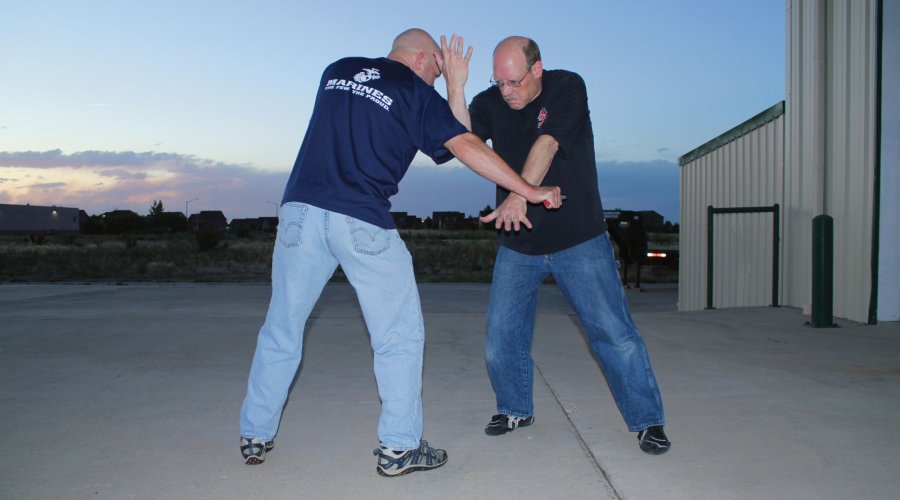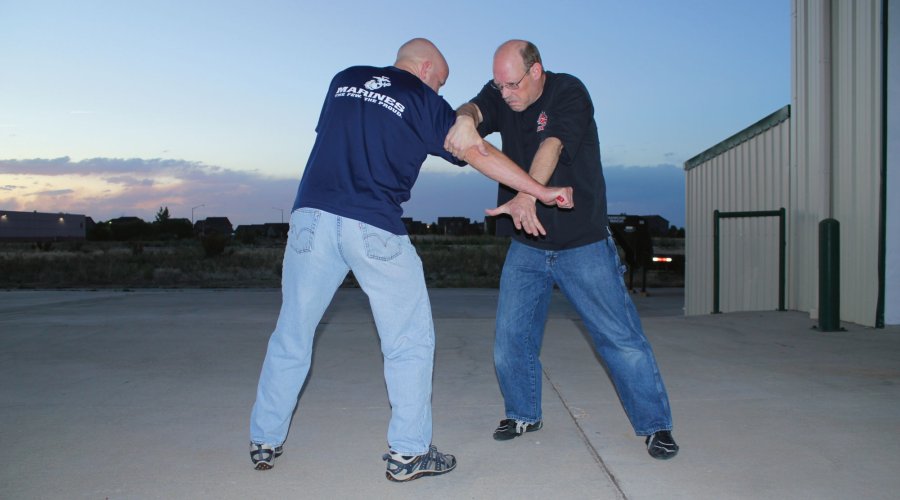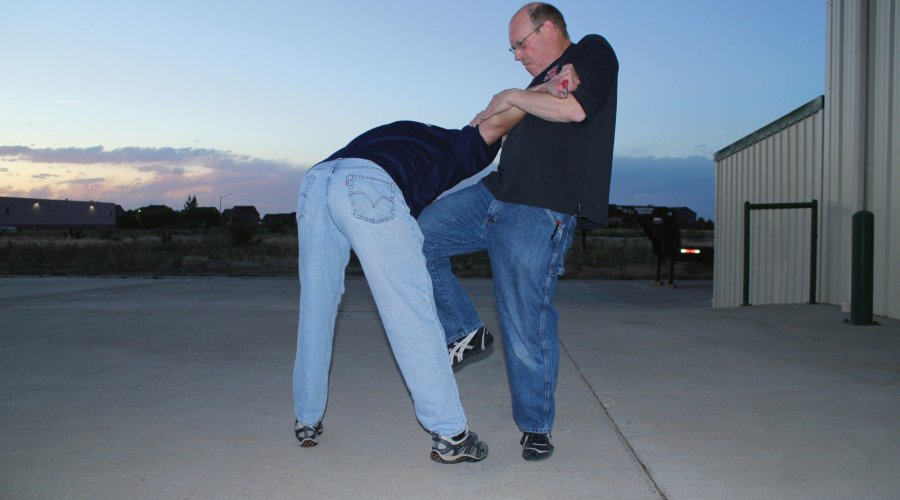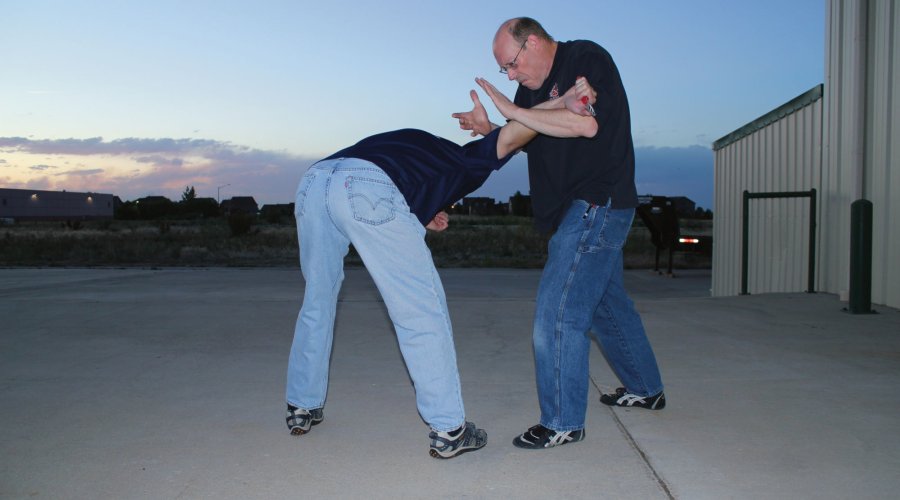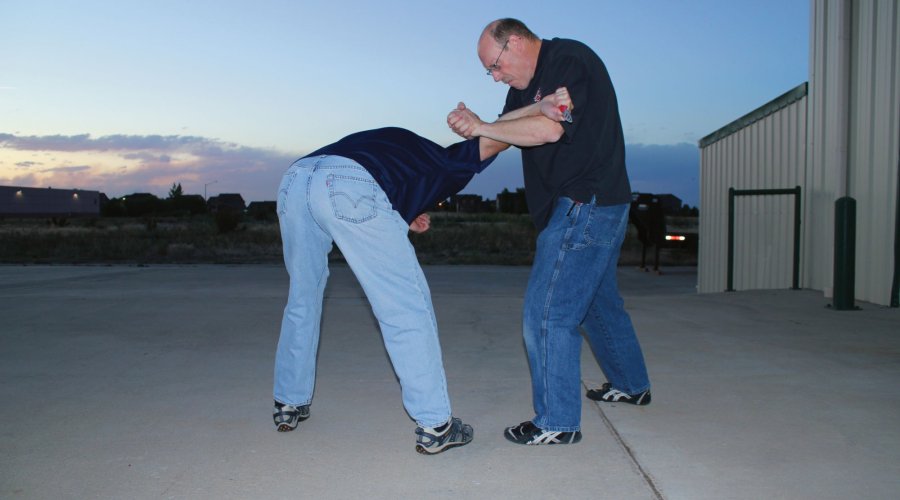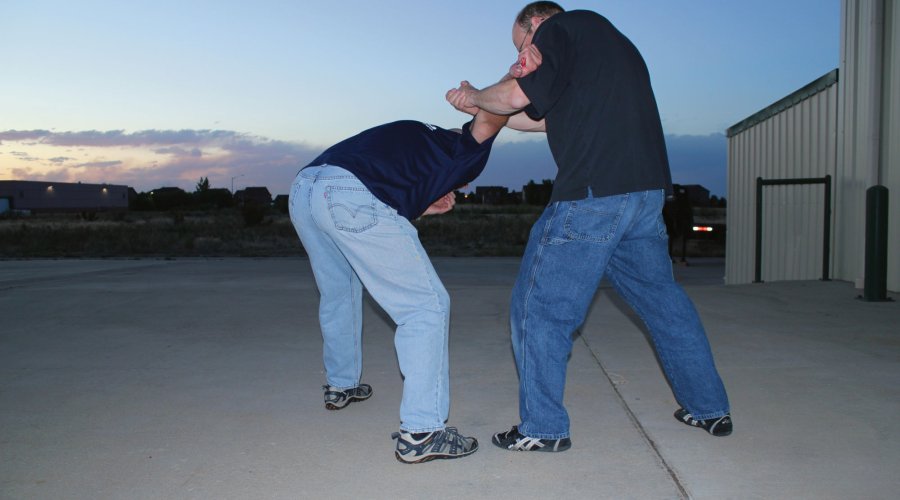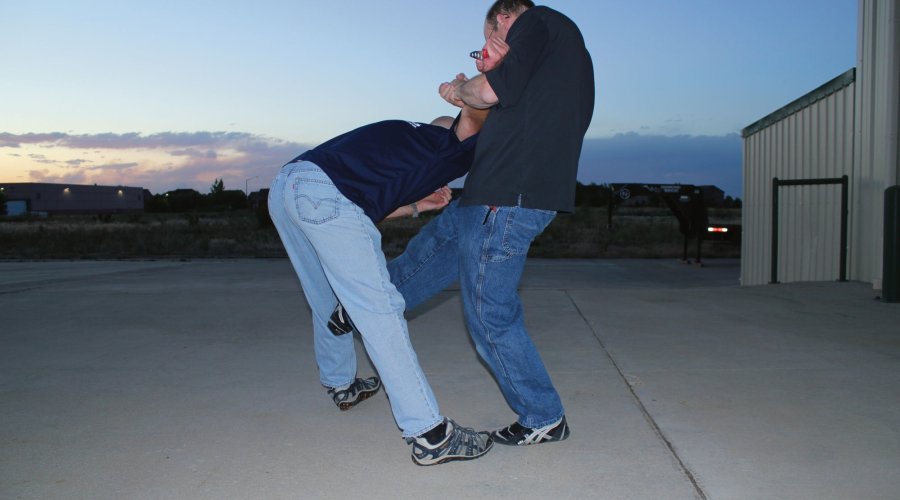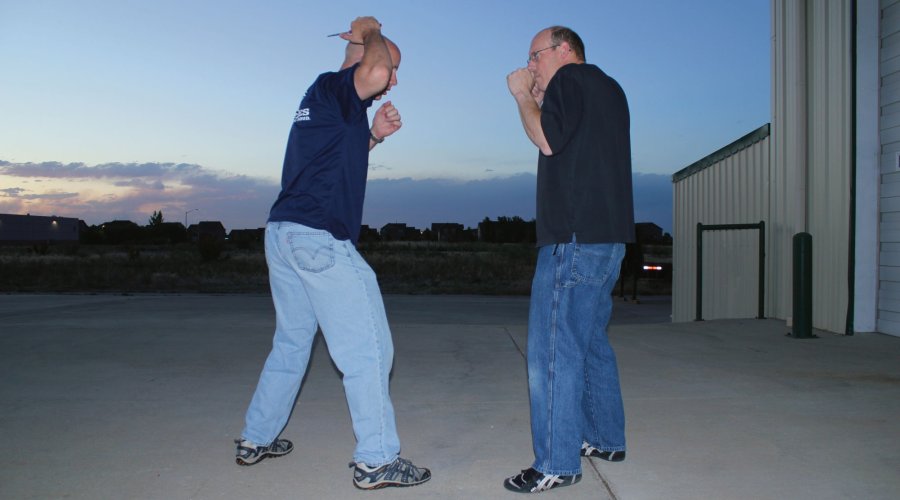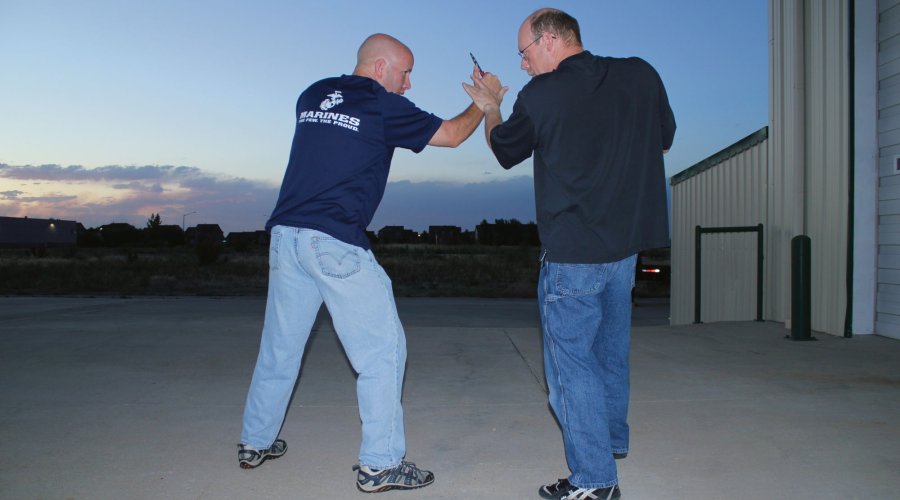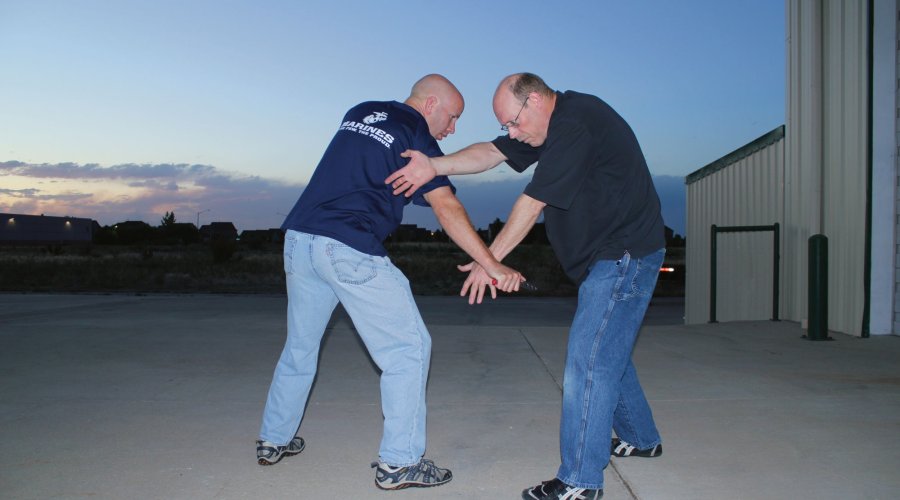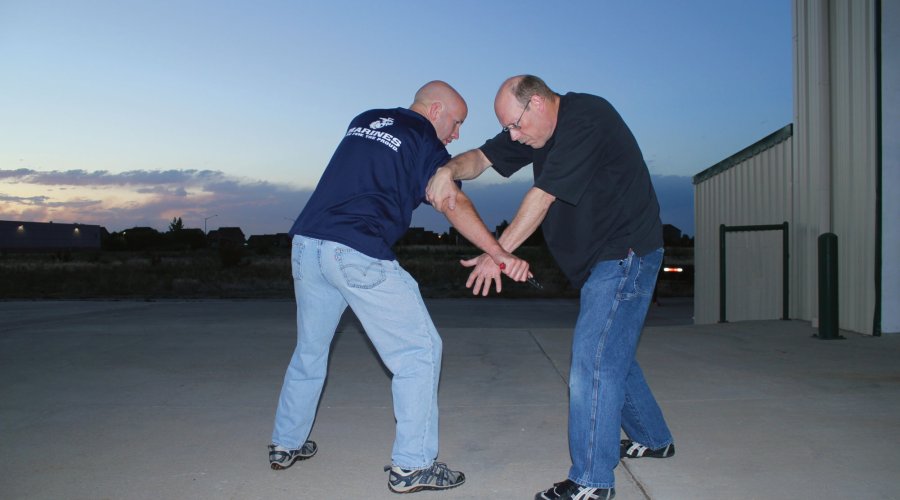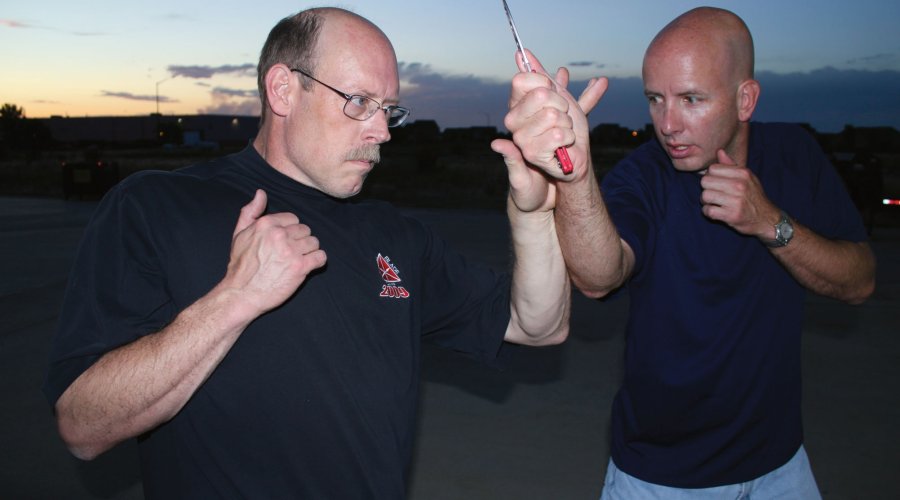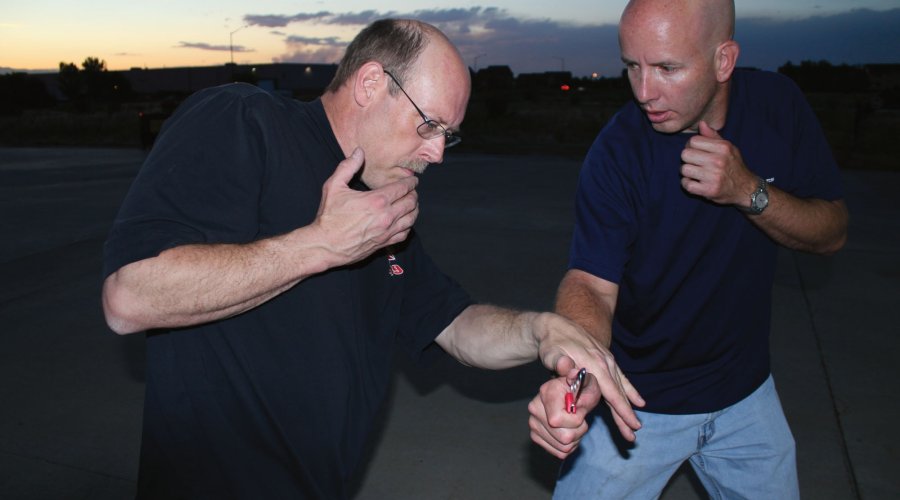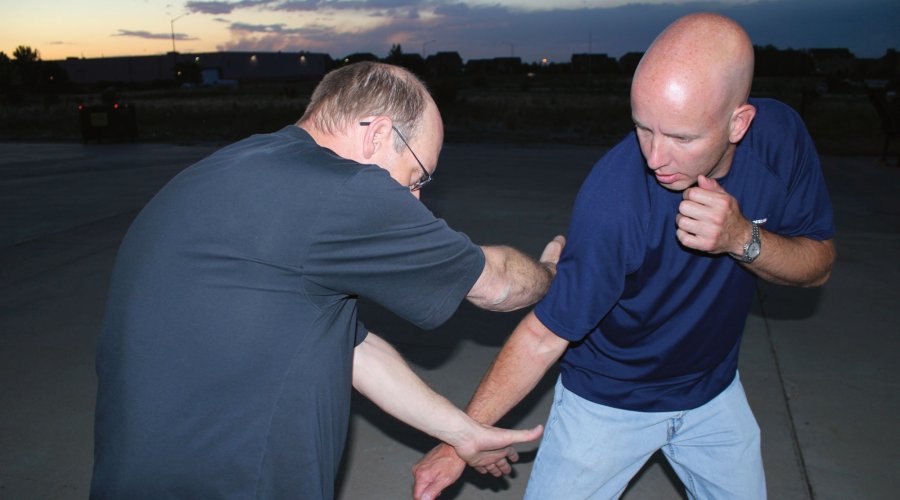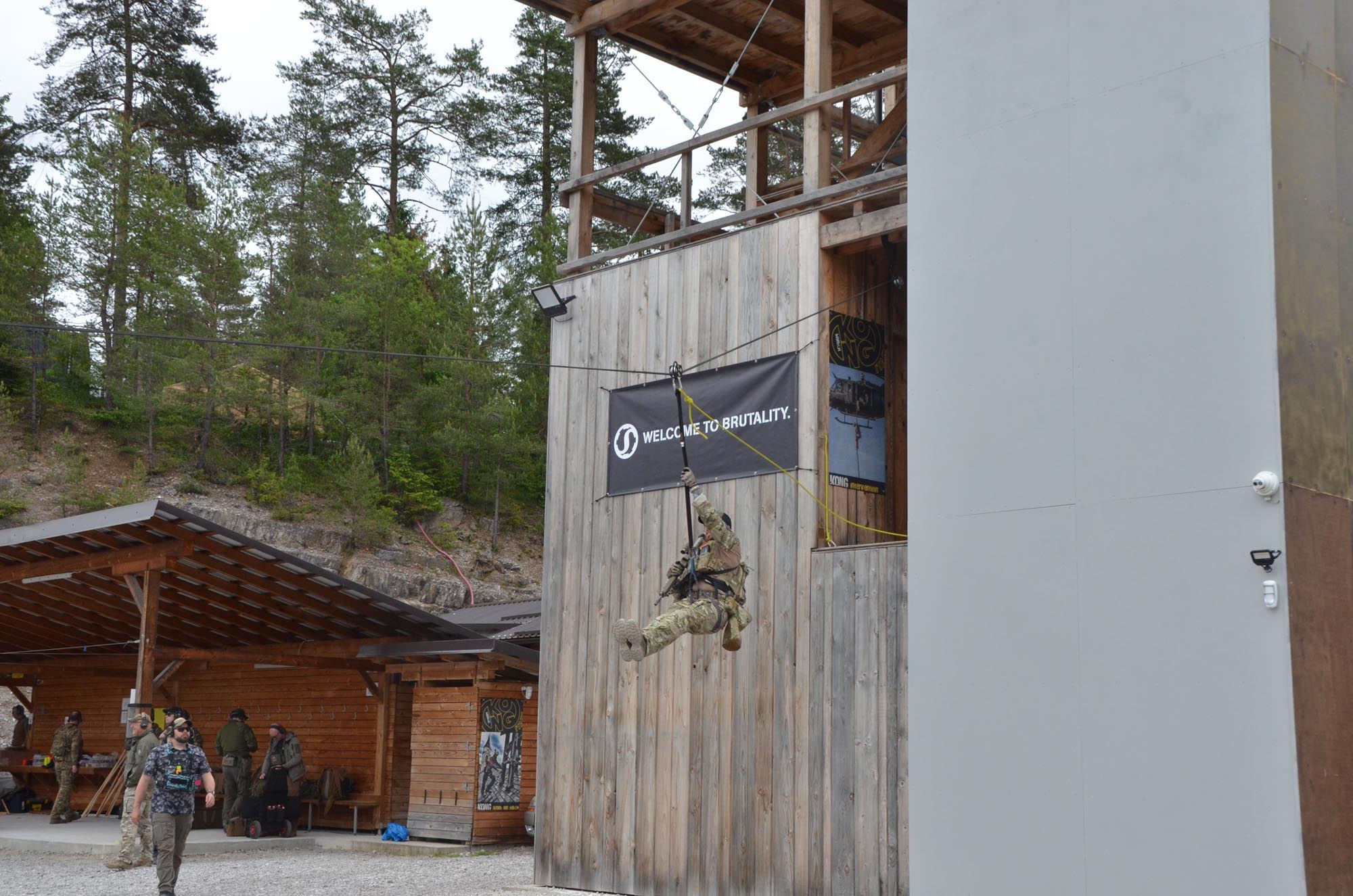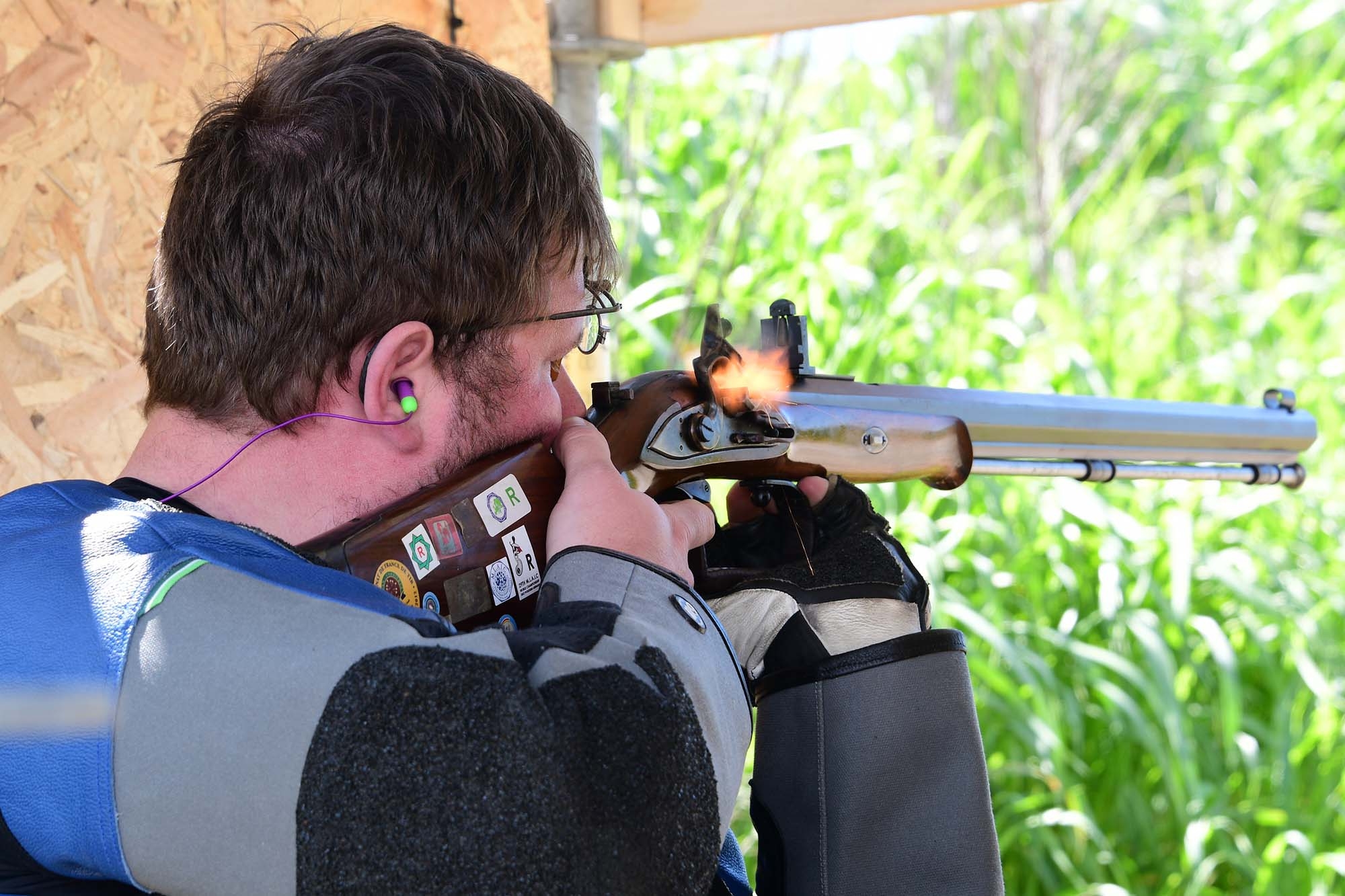This defensive tactic and its resulting control position were successfully used by CBC students as defensive measures in emergencies. Due to the effectiveness tested in the street and powerful control over the attacker's knife-wielding arm, this technique is one of the most important elements of the CBC program. Under stress and abundant adrenaline, the life-saving motto "the simpler, the better" applies. Therefore, the focus on the most practical, functional techniques, which serve as the basis for a successful defense against many different types of attacks, is one of the key elements of the complete "Martial Blade Concepts" (MBC) system. Even though the CBC system tactics offer different ways and solutions for defense, most of my students agree that it is most effective to build your tactics on the Split-X block to develop practical knife defense techniques and use them with confidence.
The control technique against knife attacks in practice
If a slashing or stabbing movement with a low forehand thrust is performed by a right-handed aggressor, the target area would be the lower, left side of our torso. In many cases, the attacker will begin with a low thrust, centrally directed at our body, which would correspond to a low angle attack. If the victim lowers his/her arm to protect his/her abdominal area, the attacker will simply change the path of his thrust to bypass the victim's arm horizontally. Fending the attacker off is relatively simple if you are already familiar with the Split-X block technique against an angle of attack that is centered on our body. All you need to do is turn your upper body and arms to the left to counter the attack path of the aggressor's arm. The right arm remains high and the left arm low and the backs of both arms point outwards. In this position you reach a very strong defensive structure, with which you can ward off even the most powerful attacks. Once the block technique has been successfully executed, turn your right hand palm downwards to grip the back of the attacker's elbow to prevent the aggressor from repeating the motion. Now pull the attacker's arm towards you with both arms, turn it and lock the aggressor's shoulder in order to strike simultaneously your opponent in the groin with your knees.
Knife control with the "compression lock”
With the ulna bone of the wrist "saw" forward across the triceps tendon just above the attacker's elbow and with a clapping movement clasp your palms into each other to create a powerful lever called "compression lock". Now fully controlling the attacker's knife arm, put the aggressor out of action with further knee strikes or low kicks. The concept that as many introductory defense techniques as possible should lead to a single final tactic that ultimately eliminates the attacker is an important part of the CBC program. This is because it reduces the need to learn techniques and ensures that all defenses have common elements. Because the less you have to learn and remember, the quicker you learn and it is easier to apply the tactics in an emergency under stress! With this concept in mind, we want to look at another, very dangerous form of knife attack: a top-down thrust or blow. In traditional martial arts, defense is often performed when the knife attack is initiated with an exaggerated movement that starts high above the head. In reality, however, it is a very compact movement at close range, which is difficult to fend off. Many classical martial arts systems teach a simple block and strike technique as a defensive measure. Unfortunately, however, the bad guys know this defensive tactic and use a counter by hooking into the victim's arm and pulling it down out of the way to continue the attack. Also, against an attacker with a longer edged weapon, the traditional block/strike defense is not a good choice, because the aggressor could also hit across the blocking arm due to the range advantages.
Common denominators of defense techniques
A better solution is to intercept the attacking hand with the left hand in a movement from left to right. This is basically a quick slap with the left hand against the back of the attacker's right fist. While doing this, you turn to the right so that your forearm is parallel to your own chest and your body is out of the way. Continuing the movement, push your arm down while turning back to have the aggressor in front again. Rotate your left hand so that your thumb is pointing upwards and drive your left forearm forward with a wedging action. At the same time we push our right arm forward to hit the attacker's arm above the elbow. At this point you are in exactly the same position as in a Split-X block against a low forehand thrust. You simply used the introductory defense to bring the attacking arm into this position. From here you can complete your usual Split-X defense: we pull the attacking arm towards us with both arms, turn it and lock the aggressor's shoulder in order to simultaneously fire knee strikes to the abdomen. With the ulna bone of our arm we “saw” forward across the triceps tendon just above the attacker's elbow and clasp our palms with a clapping movement to perform the effective compression lever. The knife arm under control, we finish with knees and/or low kicks. The key element of these techniques is to understand how to use the introductory deflecting movement to force a top-down knife thrust into the same physical position as a low forehand thrust. Once you have forced the attacker's arm into this position, you can finish with a technique you are already familiar with.
Simplicity is the key to self-defense
The key principle is that the less you have to learn for self-defense, the faster you will be able to develop useful skills. More importantly, the more unifying elements your defensive tactics have, the easier they will be to learn, internalize, and be truly usable under stress. Train hard, stay safe!
You can read the other parts of our series here:
- Basics of self-defense and the defense against the "swing" ·
- The defense against a “stranglehold” attack
- The standard sequence as the foundation of successful self-defense
- The defense against a common street attack: the collar grip
- The defense against improvised weapons
- Self-defense in ground fighting
- The defense against kicks on the ground
- Defense techniques with the walking stick
- Advanced stick techniques
- Knife defense with bare hands
- Knife defense: the "Split X"
- Knife defense: shield defense tactics



